MISADVENTURES IN THE WINDVANE SELF-STEERING MARKET
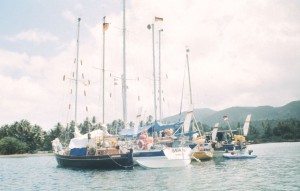 Are you sitting comfortably? Here comes another unlikely – but entirely true – tale from the world of windvane self-steering. If you were still steering by hand in the 1970s (or if, indeed, you were yet to be born), you will have to take it on trust that the events I am about to recount really happened.
Are you sitting comfortably? Here comes another unlikely – but entirely true – tale from the world of windvane self-steering. If you were still steering by hand in the 1970s (or if, indeed, you were yet to be born), you will have to take it on trust that the events I am about to recount really happened.
In 1976, ownership of Windpilot passed to me, Peter Förthmann, in exchange for a steel yawl. I lost my boat, but gained a job I loved and saw my horizons expanded beyond all measure – albeit at the price of one or two rather unpleasant experiences. Life (mine at least) has always been a magical mystery tour of shocks and surprises though, so my encounters with my fellow purveyors of vanegear fit well into the established pattern.
My chief competitors when I came into the possession of Windpilot were Aries, Hydrovane and “Swedomat”, or something like that (I fear I may have carefully forgotten, not to mention suppressed, their real name). The latter usually exhibited its products at the shows in the company of tastefully framed artwork, priced them at a level far in excess of what the rest of us felt confident to ask and – as I was subsequently to learn – sold them in homeopathic doses, mostly to well-heeled Baltic and Swan owners (of the kind who might also be in a position to mount the aforementioned original artworks on their boat).
The flagship “Swedomat” 3040 (or something like that) was the brainchild of three clever Swedes (B.P., L.Z. and S.K.) who excelled as much in navigating the jungle of the Swedish state subsidy system as in creating cutting-edge aids for long-distance sailors. Somehow, it appeared, they had managed to convince the Swedish treasury that putting government money into the development of a windvane steering system would be a lucrative move for the country as a whole. How this side of the story played out I will return to later.
Nick Franklin, in contrast, provided the stuff of dreams for budget-conscious cruisers whose only concern was sailing sailing sailing. The father of the Aries system, he represented the polar opposite of his Scandinavian competitors – and the two customer groups were just as distinct. Nick’s practicality, integrity and openness made his home on the Isle of Wight something of a Mecca for bluewater sailors (provided they were prepared to climb the hill on which it stood anyway).
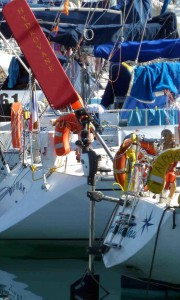
Hydrovane inventor Derek Daniels brought another distinctive element to the mix: a reserved, soft-spoken aristocrat who had seen service in the Royal Air Force, he never appeared on parade without a perfectly arranged handkerchief in his breast pocket. Who could have guessed in those days that every single one of his products originated from the same small – and ever-reliable – workshop space in Nottingham (as they still do)? I also had no reason to suspect at that time that several decades later (in 2001 to be precise) Derek would offer me the chance to buy the Hydrovane business. The fact that he did, I suppose, is indicative of how we chose to conduct ourselves as competitors.
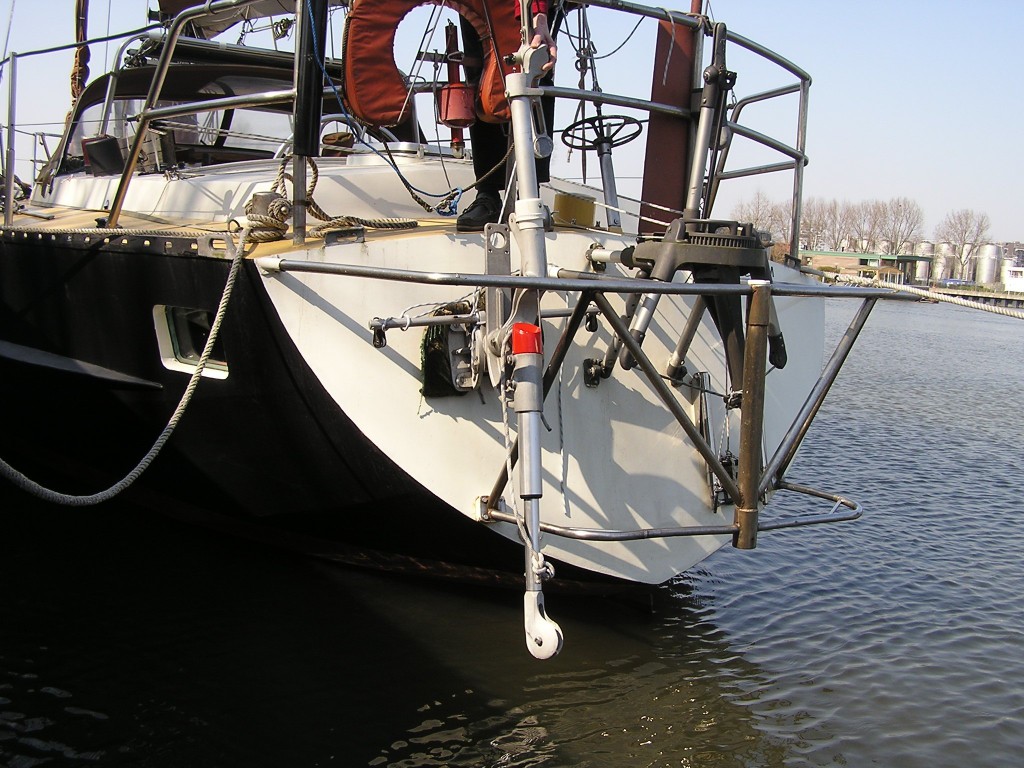
Relations then were cordial, at least between Windpilot and its two British competitors: the world had more than enough space – and customers – for all of us. Marketing concepts clashed, however, in some cases at a most fundamental level, and the consequences proved quite considerable.
Developments…
How honoured I felt after a few years in the business when a certain Stellan K., one of the three leading figures of my Scandinavian competitor “Swedomat”, visited my boat show stand in Hamburg to propose a collaborative venture.
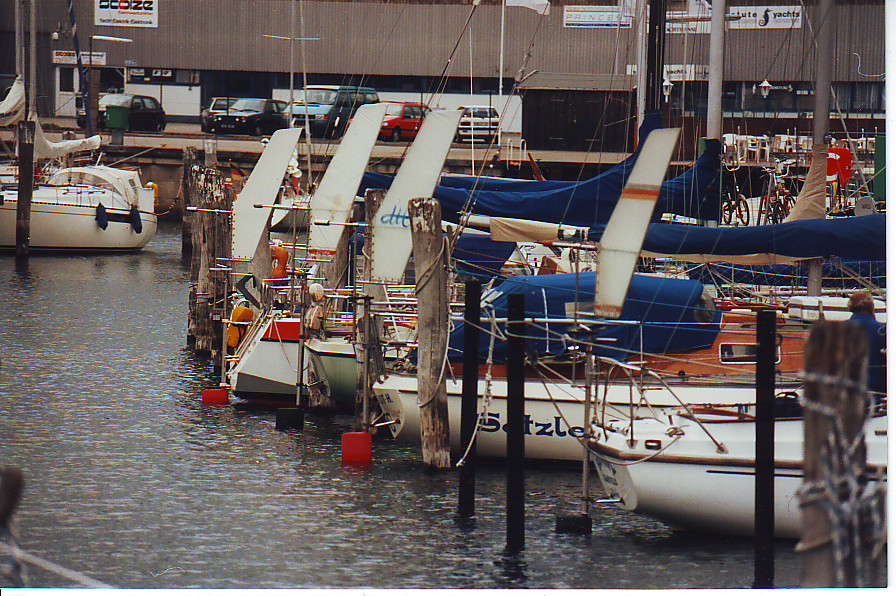
What a prospect! I, still in my own mind very much a grease and spanners man, was to become a smooth-talking salesman complete with shirt and tie. I looked up from the grime and hard graft of the Windpilot workshop (in those days all of our products were built entirely by hand in stainless steel, the Atlantik II-IV models taking around four to six days each and the Pacific a stately three to four weeks) all at once to see the sunny uplands of life with the sophisticates from across the Baltic beckoning. Put down my welding torch and become a representative for what I at that time still believed to be a prestige brand with unearthly margins? The idea certainly had its attractions.
My visitor from Sweden chatted away about unit numbers and dream returns, all illustrated with steeply ascending full-colour charts, and I wondered what I had done to make my fairy godmother wave her wand in my direction. Negotiations at an end, I signed not one but two cooperation agreements, applied for a loan and acquired a storeroom full of smartly packaged “Swedomat” systems that were quietly gathering dust by the port down the road.
What my Swedish envoy had forgotten to mention, with all the talk and pretty pictures, was that at the time I signed the contracts, the “Swedomat” trademark to which they related was not his to share. It actually belonged to a former representative of the company, who had fallen out with the three owners after a trip to Sweden to discuss the absence of financial returns and whose intervention had left the whole company in tatters. He wasted no time in obtaining an injunction preventing me from using the trademark, whereupon my stand at the Düsseldorf boat show was cleared and I discovered at a stroke with precisely what nature of people I had ended up doing business.
How was I to know that the three owners’ cunning attempt to manufacture and sell eye-wateringly expensive vanegear with the backing of handsome state subsidies had just hit the buffers and that the insistence of the source of those subsidies – the Swedish state – that the promises made (at best highly improbable in the first place) be honoured had led to the company going belly up? Liquidation in all likelihood represented the owners’ preferred option at this stage in order to protect against (or simply evade) compensation claims from the Swedish government. This may well also be why S.K. relocated to the USA, where he embarked on a new adventure in which I, as I can now see all too clearly, had been cast in the role of donkey. And a nasty piece of theatre it proved too.
The contracts concluded with me under the “Swedomat” name were effectively meaningless, as the trademark was never available in the first place. The money I had paid, on the other hand, was perfectly real. And it was perfectly gone too, leaving me sitting on a pile of gleaming blue windvane steering systems worth nothing more than the scrap value of the aluminium, which in those days amounted to very little and certainly nothing like enough to satisfy the bank. The time was right to pull the plug on my limited company. Only, I didn’t have one. I was all there was.
The pressure from my deceiver was unrelenting though: “Sorry, bad luck, but unfortunately you will have to fulfill the other contract”. And with this came reminders not only of my purported obligation to receive and pay for further shipments, but also of the claims for damages in the half a million dollars range that would follow if I failed to comply. Thankfully the exact details have begun to fade now and I have no intention of venturing back to the box of papers filed away (under a name far too obscene to print) at the back of my archives for a refresher.
When I made similar noises in respect of the contract covering the trademark, my signature on which had put my entire future in jeopardy, I was referred to my new adversary’s wife. It was her name that appeared on the contract next to my own and she, regrettably, lived in San Diego, California, and was to all intents and purposes unreachable by conventional means. I often wonder whether the woman concerned even had any knowledge of the contracts. Certainly her husband seemed to view life as a one-way street in which his armoured vehicle had sole right of way.
I had made a costly mistake in every sense: life had been turned upside down, sleep was increasingly hard to come by and the lawyers, excited by the prospect of a fresh chance to craft their castles of sand, were beginning to circle. There I stood, at 36 years of age, bang in the middle of a six-figure catastrophe with no obvious emergency exit. I believe that’s enough trouble for one person in one lifetime!
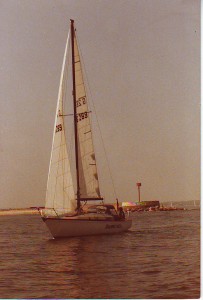
Let me cut to the chase: my former friend, so recently a guest in my own house, was newly married. Unfortunately his wife’s family name was among the most common in Sweden, but luckily her father was a bishop, and they are much thinner on the ground. Short of options, I ended up calling international telephone directory enquiries and asking for the equivalent of Smith or Jones from a village in the archipelago North of Stockholm. I added, hopefully, that the man in question ought to be well known in religious circles. The cheerful voice at the other end of the line came back, “You know, I used to live in that town … and there is indeed a family prominent in the church by the name of Smith/Jones – try this number.”
Jackpot! Just the one “thank you” seemed hardly sufficient: my phone call and letter to the honourable older gentleman and his family on the island unleashed the fires of purgatory upon their newly elevated son-in-law, speeding up various processes, both legal and mental (chiefly his contemplation of fairness, respect and human decency), enormously. I had hit him where a man hurts most – his pride – and the son-in-law now felt the heat everywhere from Viking country to the outskirts of Tijuana. Friends we were not!
I had the depth to which relations had plummeted underlined for me by the offer that then followed: my erstwhile business partner would buy back the unsalable “Swedomat” units for 10,000 Marks in cash on delivery, in the original packaging, to snowbound Northern Sweden. And this, remember, for goods for which my bank still expected the full six-figure purchase price repaid. The trademark issue rendered them completely worthless as products though, so scrap represented my only other option and compared to that, 10,000 Marks added up to something of a result. Perspective is everything!
There is no denying it was a rotten deal of course but it did at least offer me a quick way out of a disastrous affair with a person whose life’s software obviously operated according to different principles from the rest of us. I certainly had no appetite at that time for years of legal wrangling, so I bit the bullet and, not for the first time, learned my lesson the hard way. To be a solid six figures in the red was a new experience for me, a young man who had always had a very clear idea of the right way to behave not just in business but in interpersonal relationships in general. Ah, the innocence of youth!
What made the calamitous misadventure even worse was that I had advertised my own company for sale in YACHT magazine, signed a contract with a buyer and could all but see the new owner limbering up in the yard outside my workshop. Continuing the theme of the moment, however, he too turned out to have a rather peculiar understanding of commercial convention. His wallet, in other words, could not keep the promises his mouth had made and this enabled me, opening up a second front alongside the ongoing “Swedomat” debacle, to hang on to Windpilot. What I also retained for the future, naturally, were my substantial debts (a bail-out would have been nice, or even a favourable currency reform, but unfortunately I seem to have been somewhat ahead of the times in falling into my own personal financial crisis).
Curiously the tune coming out of San Diego more than 30 years later has changed altogether – and has become quite out of tune with events as the elephant in me, always particularly sensitive to defeats despite my generally sanguine disposition, remembers them. Historical misrepresentation I believe it is called; still, as long as the face looking back in mirror believes you…
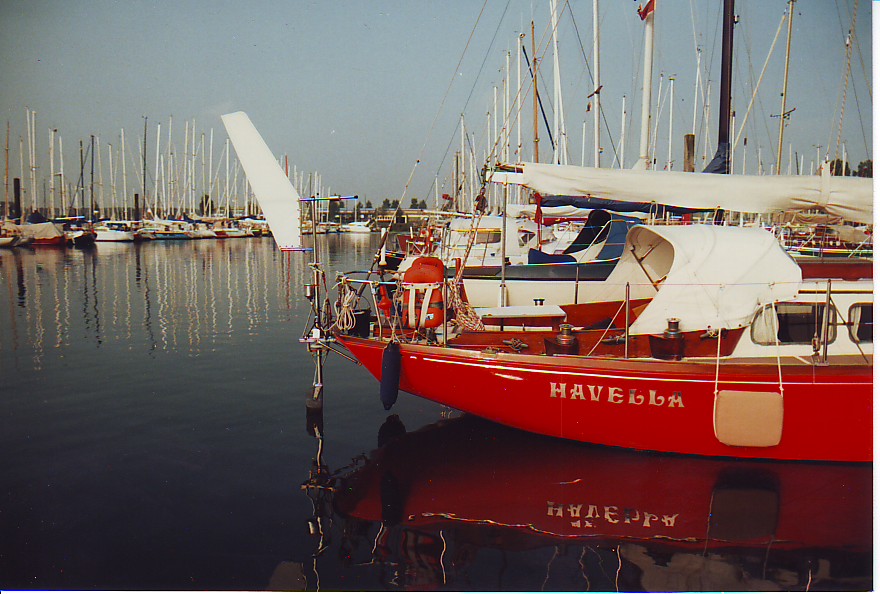
My experiences with Aries, which, at this point in the 1970s, had already begun series production in aluminium (at a time when we were still handcrafting our Pacific in stainless steel) were pure sweetness and light by comparison.
I actually served as German agent for the marketing and repair of these robust English silent helmsmen during the seventies, a role that came to me without any fanfare when Cologne-based former Aries importer Franz Wiss, the DIY project on his steel yacht finally complete, decided it was high time he went sailing. I even still have a box of Aries spares somewhere.
I remember my trips to the Isle of Wight to visit Aries fondly: the ferry would come alongside and there would be Nick Franklin in his rickety Peugeot 204 (only two of the four gears actually worked, but that was obviously enough for island travel). Then it was back to his house, where the kitchen floor, main thoroughfares aside, was decorated with a border of small coins that, apparently surplus to requirements, had been carefully pushed to the edges. Picking any up was absolutely out of the question – British eccentricity at its finest!
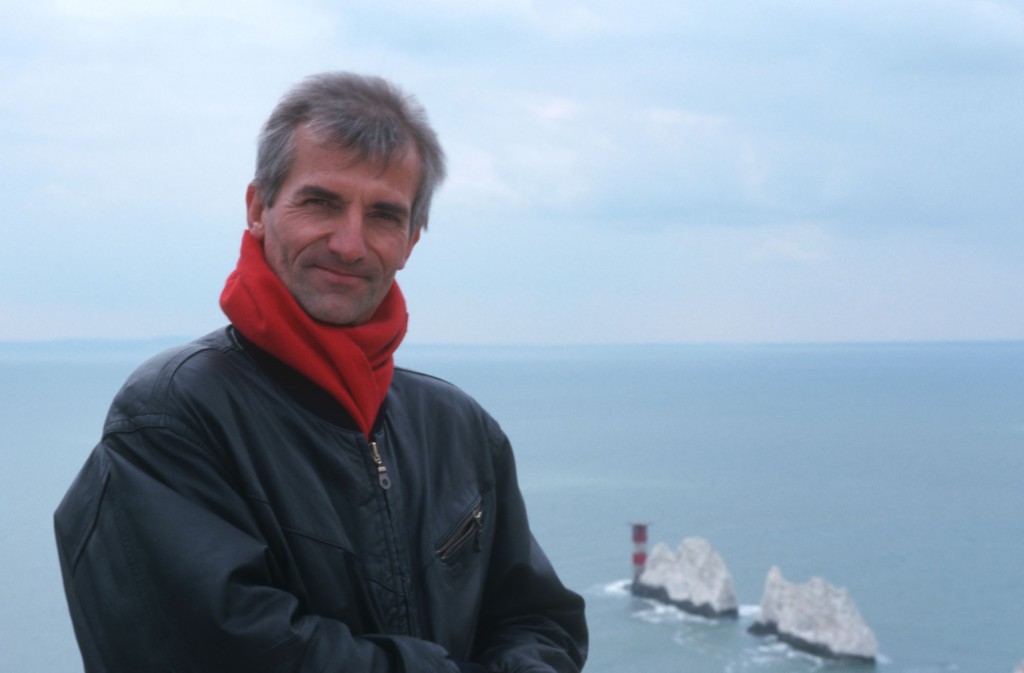
The house was full of life, not least thanks to Nick’s daughter Helen, a mischievous young thing whose energy crackled all through the place. A respectable wooden fence marked out the boundary between production block and home sweet home, the surroundings were perfect and the view of the Solent could be breathtaking – indeed so fine was the setting that it almost seemed a shame to have to work there.
When this same Helen, by now a grown woman, appeared on my stand at the Hanseboot show a long two and half decades later and introduced me to Peter Matthiesen as the new Aries man, I had no hesitation in promptly inviting both to the boat show party I was about to host on the roof of my workshop. This seemed to me to be the logical and appropriate thing to do: I just automatically dropped straight back into the old friendships and extended the new Mr. Aries the usual warm welcome. Why not? I consequently became somewhat irritated during the party when, noticing that my new competitor had been absent for some time, I enquired after him and found him in my workshop introducing his camera to my manufacturing systems (I hadn’t suspected a thing). Friendly relations were nevertheless maintained (sometimes I wish my mother hadn’t raised me so well – but in any case I soon returned the favour and satisfied my own curiosity with a visit to Peter Matthiesen’s HQ in Nordborg on the Danish island of Als).
In truth I had more than one reason to go to Denmark. My friend Jimmy Cornell had suggested to me that I publish my book SELF-STEERING UNDER SAIL in English and I had decided it might be expedient to show the text to my fellow operators in the sector ahead of publication. The powers that be in Nordborg responded by requesting that publishers Adlard Coles insert an advert for Aries at the end of the book, which I took as something of an endorsement. How then did it come to pass a short while later that the same source suddenly invented the “Bad Weather Problem”? Even today I cannot entirely rid myself of the suspicion that this ‘problem’ was dreamt up as a would-be marketing masterstroke that couldn’t fail to get under the skin of the competition: honestly, what worse way is there to try and discredit competitors than to imply that their products simply don’t work?
The whole business could have provided grist for the lawyers’ mill (and invoices) for years and I am quite sure there are still some sailors out there who, without stopping to question the fount of this information, blindly go on believing it just because they automatically associate the Aries name first and foremost with robustness (a conviction backed up by its continuing popularity with certain senior sea dogs). Be that as it may, I resolved to let sleeping lawyers lie (no pun intended) and trust that sailors with a grasp of basic physics would reach their own conclusions, especially once they had been made aware that there had never been a BAD WEATHER PROBLEM on a boat that was neither in extreme seas nor anchored in quartering waves nor motoring backwards…
There have obviously been some developments at Aries in the meantime, as the original owner and his daughter have been back in the market on their own behalf for quite some time now. Might this be another case of “misunderstandings” in the windvane steering business? My own experience of the propensity of some people to change their spots as it suits them probably colours my view, but I for one certainly wouldn’t rule it out.
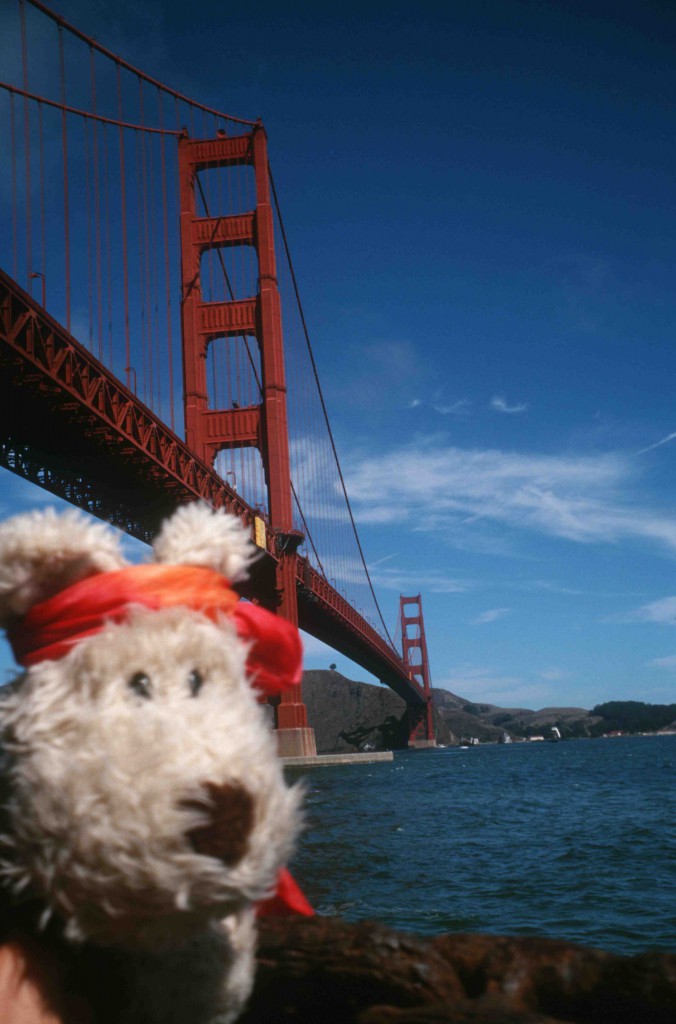
From Denmark I took my manuscript on to Richmond, California, to see Scanmar Marine’s Hans Bernwall, who read the whole thing through while I gave his piano a work-out. We fired up the barbie and I took time to enjoy the wonderful view of San Francisco Bay from my bed in the top room. Hans, in other words, was friendliness personified. I was no threat, he felt, to what he saw as his position as king of the windvane steering system builders – he even deigned to call me the prince – and in any case I was rather shaggy and unshaven, which in the US, while cool, was not considered entirely businesslike at the time. A little mutual flattery now and again does no harm, however, provided nobody takes it too seriously, and anyway Hans appeared genuinely impressed and placed an order for an advertisement with the publishers in England in order to help support the book.
The publication of SELF-STEERING UNDER SAIL opened a new can of worms, the details of which you are welcome to follow up here.
I have seen some astonishing things in nearly four decades in the shark-infested waters of the marine business, almost all of them (the negative ones at least) the result of someone or other’s ‘alternative’ approach to dealing and interacting with their fellow humans, and it sometimes feels like a triumph just to have kept my head above water for all these years.
Mercifully life at Windpilot has never been dull, a fact best conveyed, I think, in short tales and anecdotes such as those recounted here. Which is why even now I find myself trawling the mental archives for the next collection of stories. Consider yourself warned, advises
Peter Förthmann



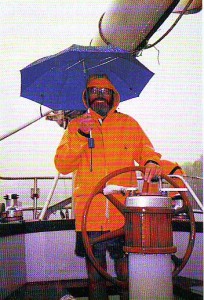






























Hallo Peter, Gratulation zu Deiner Initiative und ich wuensche Dir viel Durchstehvermoegen! Ich war beinahe 10 Jahre Mitglied beim TO ehe ich wegen eines schlechten Revierbeitrages, Achtung Argentinienfahrer!, von den Herrschaften in Cuxhaven oeffentlich blossgestellt wurde. Der Webmaster wie der Vorsitzende fanden dies in Ordnung. Ich und andere Skipper, wie ich erfahren habe, haben auch aus andern Gruenden die Konsequenzen gezogen und unterstuetzen nun andere Plattformen.
Herzliche Gruesse Rene SY SVENYA
Fun to read about Wind Pilot. I was the first to manufacture a large number of Wind Pilot 2, and 3 in Sweden for around 70s for Grinups behalf. Including the rudder sat on the Vega Saga II Grinups sailed halfway around the earth with.
Urban Hahne